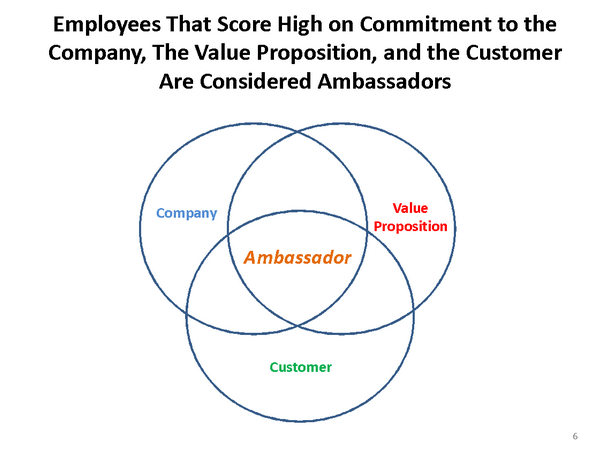Michael Lowenstein, Ph.D., CMC Thought Leadership Principal, Beyond Philosophy
A recent article by a major employee research and engagement consulting organization led with the above headline. They were reporting on results of their national workforce tracking poll, the highlight of which was that employee engagement had risen 1.2% between January and February, 2015 (to 32.9%) and that this new level was the highest engagement rate reported in the past three years.
The consulting organization went on to conclude from these findings that “Recent trends suggest that improvements in engagement coincide with improvement in unemployment and underemployment.”, with the bottom line statement that “A decline in the percentage of unemployed and underemployed Americans may have some influence on the percentage of engaged workers. As the job market becomes more competitive, it is possible that companies are putting more effort into engaging their current workers.” At best, this conclusion feels like a major s-t-r-e-t-c-h of correlation analysis results.
This same organization believes that “Employee engagement is a leading indicator of future business success….”; and, to the degree that engagement level can impact staff turnover and productivity, both key contributors to profitability, this is a fair statement. However, when this organization, and others in the employee engagement research, training and consultation space, makes claims that engagement, in and of itself, contributes to customer value and loyalty behavior, two important questions need to be asked. Those question are:
1) Really? and,
2) Where’s the consistent proof for individual companies?
Just as satisfaction has little proven connection to customer behavior, employee engagement was not designed to drive customer behavior. To build on this statement, let’s begin by looking at the results of satisfaction on downstream customer action. Beyond extremely macro connection to sales, customer satisfaction (as expressed through the ACSI) has been shown to have little direct connection to purchase behavior, to the tune of 0.0% to 0.1% correlation. Many companies are still measuring customer sat in hopes that learning about its drivers will help build customer loyalty, but satisfaction isn’t contemporary regarding decision-making or reflective of what is going on in the customer’s real, emotional world.
‘Employee engagement’ has many meanings and interpretations, but relatively little of it has to do, by conceptual definition, specifically with impact on customer behavior. Thorough analysis conducted by The Conference Board in 2006 showed that, among twelve leading engagement research companies, twenty-six key drivers of engagement could be identified, of which eight were common to all:
-
Trust and integrity – How well do managers communicate and ‘walk the talk‘?
-
Nature of the job – Is it mentally stimulating day-to-day?
-
Line of sight between employee performance and company performance – Do employees understand how their work contributes to the company’s performance?
-
Career growth opportunities – Are there opportunities for growth within the company?
-
Pride about the company – How much self-esteem do the employees feel by being associated with their company?
-
Coworkers/team members – How much influence do they exert on the employee’s level of engagement?
-
Employee development – Is the company making an effort to develop the employee’s skills?
-
Relationship with one’s manager – Does the employee value relationship(s) with manager(s), and is there trust and credibility between the levels?
Typically, there is little or no mention/inclusion of ‘customer’ or ‘customer focus’ elements either in measurement or analysis of employee engagement. Though customer experience, and resultant behavior, is impacted by engagement, it is more tangential and inferential than purposeful in nature.
As noted, employee engagement can impact corporate profitability at the macro level (as much as three to four times higher for top-scoring engagement companies compared to those on the bottom half of companies using this measure); and that’s one of the really valuable results it provides. A major 2012 collaborative secondary research effort, Engage for Success, by the University of Bath School of Management and Marks and Spencer in the U.K. concluded, as we’ve seen with other research into the benefits of employee engagement: “As well as performance and productivity, employee engagement impacts positively on levels of absenteeism, on retention, and on levels of innovation….”
Where customer behavior changes are reported as a result of employee engagement, they were (like satisfaction’s impact on customer behavior) also at macro and rather weak tea, incidental levels: “An earlier (2006) Gallup report that examined over 23,000 business units showed that companies with engagement levels in the top quartile averaged 12% higher customer advocacy than those in the bottom quartile.” Like the “So what?” question, the consistent financial impact of engagement on individual companies and their customers, i.e. on a micro level, needs to be addressed, understood and reported.
Now, we come to employee ambassadorship and how it builds on the useful alignment and productivity represented by engagement. Employee ambassadorship, or employee brand ambassadorship, has direct connections to – yet is distinctive from – both employee satisfaction and employee engagement. Its impact on customer behavior can be, and has been, proven at the individual company level. As a research framework, and method for understanding employee behavior, its overarching objective is to identify the most active and positive (and inactive and negative) level of employee commitment to the company’s product and service value promise, to the company itself, and to optimizing the customer experience. The ambassadorship thesis, with its component elements, can be displayed as follows:
-
Commitment to company – Commitment to, and being positive about, the company (through personal satisfaction, fulfillment, and an expression of pride), and to being a contributing, loyal, and fully aligned, member of the culture
-
Commitment to value proposition – Commitment to, and alignment with, the mission and goals of the company, as expressed through perceived excellence (benefits and solutions) provided by products and/or services
-
Commitment to customers – Full commitment (by all employees and the enterprise)to understanding customer needs, and to performing in a manner which provides customers with optimal experiences and relationships, as well as delivering the highest level of product and/or service value
Ambassadorship is linked to the key productivity and empowerment elements of employee satisfaction, engagement, and alignment research, and related training and operating approaches. However, it more directly contributes to business results, experience optimization, and value delivery because its key concept is building customer bonds through direct and indirect employee interaction. As companies strive to become more customer-centric in all things they do, we believe that the emphasis on building strong employee ambassadorship will continue to increase as a core objective.
‘Happy people give you happy customers’, is the foundation insight that now drives many employee engagement initiatives including our founder, Colin Shaw, who lived by this when he was SVP of Customer Experience & leading 3,500 people. Now he will be presenting a FREE webinar “Employee Engagement & Ambassadorship, Optimizing Their Impact on the Customer Experience”, Michel Lowenstein. Register here.
Republished with permission from CustomerThink.com
| Michael Lowenstein provides strategic consulting, research design and in-depth, leading-edge analysis that helps clients deliver outstanding business results through deeper customer experience, communication, relationship, employee and brand equity insights. Beyond Philosophy provide consulting, specialised research & training from our Global Headquarters in Tampa, Florida, USA. |



